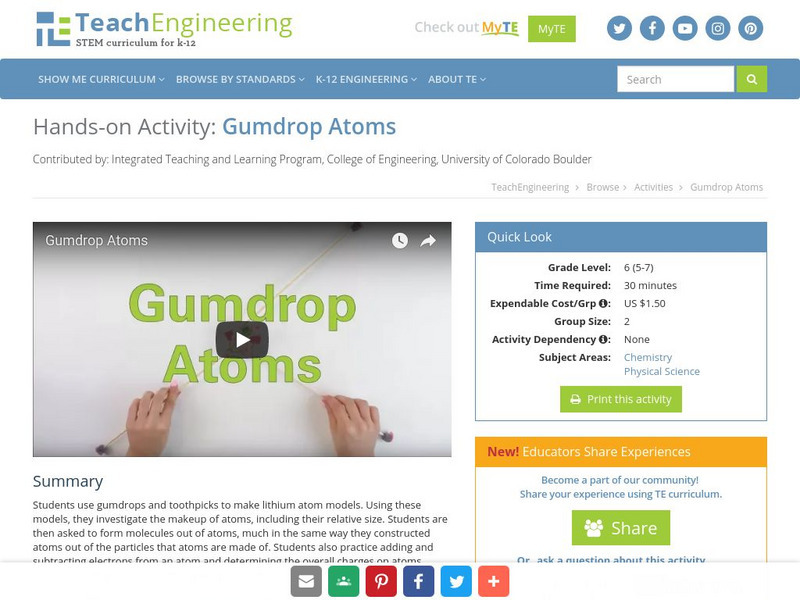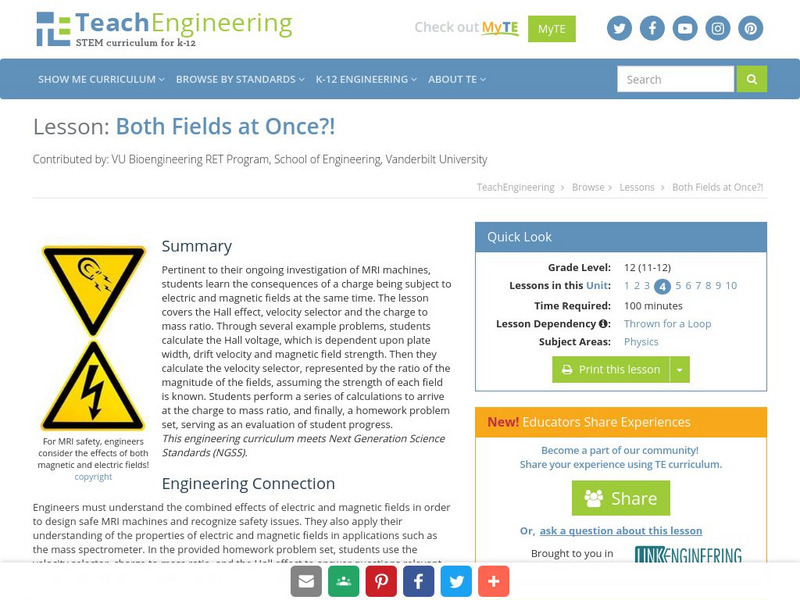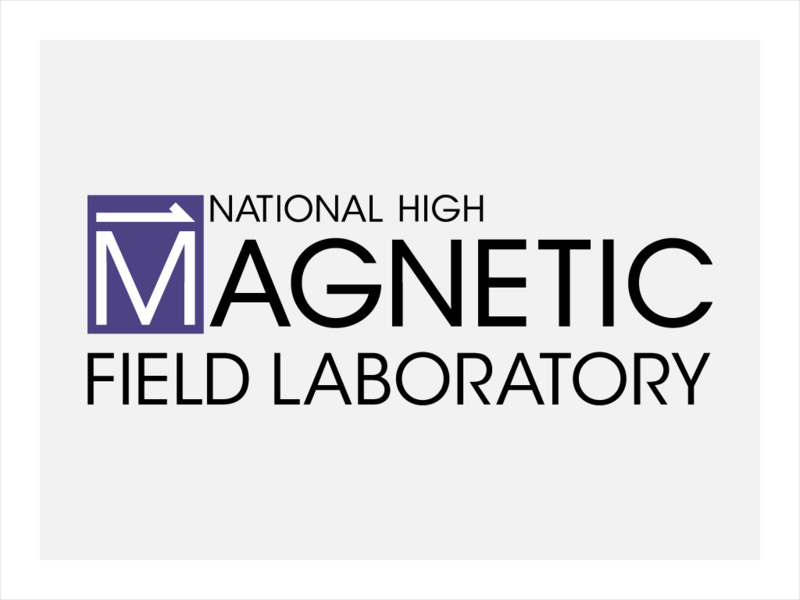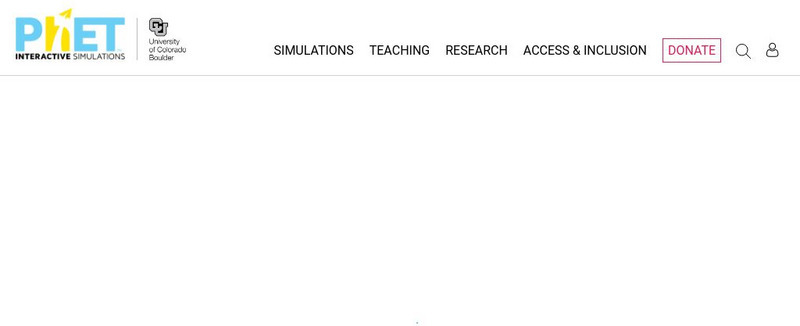Smithsonian Institution
Smithsonian Learning Lab: Making Friends With Franklin
This site is an introduction plus a series of three lesson plans that explore Franklin's portraits plus aspects of his work in science and writing.
TeachEngineering
Teach Engineering: Gumdrop Atoms
In this activity, students make a model of a lithium atom using gumdrops and toothpicks. Using this model, they investigate the makeup of an atom, including its relative size. Students also practice adding and subtracting electrons from...
Vision Learning
Visionlearning: Atomic Theory: Bohr and the Beginnings of Quantum Theory
Description of the ideas and experimentation that led to quantum theory. Focus on electrically charged ions and isotopes.
Texas Instruments
Texas Instruments: You'll Get a Charge Out of This!
In this activity, students make a battery using different fruits and vegetables, a copper penny, and a zinc washer. They use a voltage probe to collect data on voltage and compare the values of different batteries.
National High Magnetic Field Laboratory
Magnet Academy: Peter Debye
Peter Debye carried out pioneering studies of molecular dipole moments, formulated theories of magnetic cooling and of electrolytic dissociation, and developed an X-ray diffraction technique for use with powdered, rather than...
Exploratorium
Exploratorium: Science Snacks: Magnetic Suction
An experiment to find out how an old-style doorbell works.
Science Struck
Science Struck: Electromagnetic Energy and Why It Is Important
Explains what electromagnetic energy is, the history of its discovery, some terms used when talking about it, and gives some facts about it.
The Franklin Institute
Franklin Institute Online: Electrified Ben
This site from the Franklin Institute Online provides a somewhat simplistic but interesting tale of Ben's electrical activities. Fine link to "electricity bells", in Franklin's own words. Some other links to projects, maybe not so...
Georgia Department of Education
Ga Virtual Learning: Electrostatics With Conductors
In this interactive tutorial students will find out why the electric field inside a conductor is zero. They can learn to read maps of equipotential surfaces surrounding charged conductors and map electric field lines from those...
TeachEngineering
Teach Engineering: Both Fields at Once?!
This lesson plan discusses the result of a charge being subject to both electric and magnetic fields at the same time. It covers the Hall effect, velocity selector, and the charge to mass ratio. Given several sample problems, students...
Georgia Department of Education
Ga Virtual Learning: Gauss' Law
In this interactive lesson students will be introduced to an electric flux, Gaussian surface and charge density.
Georgia State University
Georgia State University: Hyper Physics: Voltage
Electrical currents and voltage are defined and illustrated.
Georgia State University
Georgia State University: Hyper Physics: Capacitors
Online university physics text called "Hyperphysics". Three sections here: Capacitors, Capacitor Combinations, Charge on Series Capacitors. These are nice clean lessons, good illustrations, many hotwords to assist. A fine online lesson,...
National High Magnetic Field Laboratory
Magnet Academy: Leyden Jars 1745
Because they could store significant amounts of charge, Leyden jars allowed scientists to experiment with electricity in a way never before possible.
National High Magnetic Field Laboratory
Magnet Academy: Joseph John Thomson
Joseph John Thomson, better known as J. J. Thomson, was a British physicist who first theorized and offered experimental evidence that the atom was a divisible entity rather than the basic unit of matter, as was widely believed at the...
Curated OER
Georgia State University: Point Charge Potential
This site from the Georgia State University explains the concept of electric potential about a point charge or combination of severat point charges. An interactive JavaScript form allows the visitor to investigate the effect of distance...
Curated OER
Georgia State University: Point Charge Potential
This site from the Georgia State University explains the concept of electric potential about a point charge or combination of severat point charges. An interactive JavaScript form allows the visitor to investigate the effect of distance...
Curated OER
Georgia State University: Point Charge Potential
This site from the Georgia State University explains the concept of electric potential about a point charge or combination of severat point charges. An interactive JavaScript form allows the visitor to investigate the effect of distance...
NOAA
Noaa: National Weather Service: Jet Stream Online School for Weather: Lightning
The National Weather Service presents this comprehensive site on lightning. Learn how lightning is created, what makes the sound of thunder, and ways to be safe during a storm. Learning lessons, frequently asked questions, and review...
Science and Mathematics Initiative for Learning Enhancement (SMILE)
Smile: Series and Parallel Circuits
A teacher lesson plan which could be easily converted into an idea for a student project or presentation. Ideal for pre-high school students. This page describes an activity in which the history of electric circuits, the nature of...
Concord Consortium
The Concord Consortium: Molecular Workbench: Electrostatic Interactions
Adjust the amount of positive or negative electrostatic charge on a balloon to see how it interacts with the charges in a wall.
University of Colorado
University of Colorado: Ph Et Interactive Simulations: John Travoltage
See how electrons build up and are discharged as static electricity.
University Corporation for Atmospheric Research
Ucar: Plasma
Article explores plasma, an electrically charged gas found in electrical lights and nature.
Society for Science and the Public
Science News for Students: Cold, Colder and Coldest Ice
Describes research into the freezing point of water and how scientists have frozen it at different temperatures, depending on the electric charge.
Other popular searches
- Electric Charge Behavior
- Electric Charge and Force
- Physics Electric Charges
- Electric Charges and Current
- Flow Electric Charges















